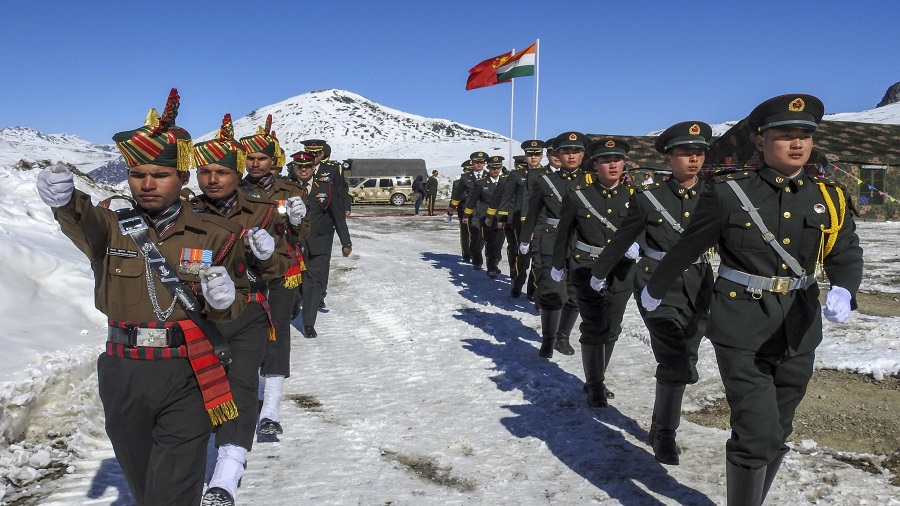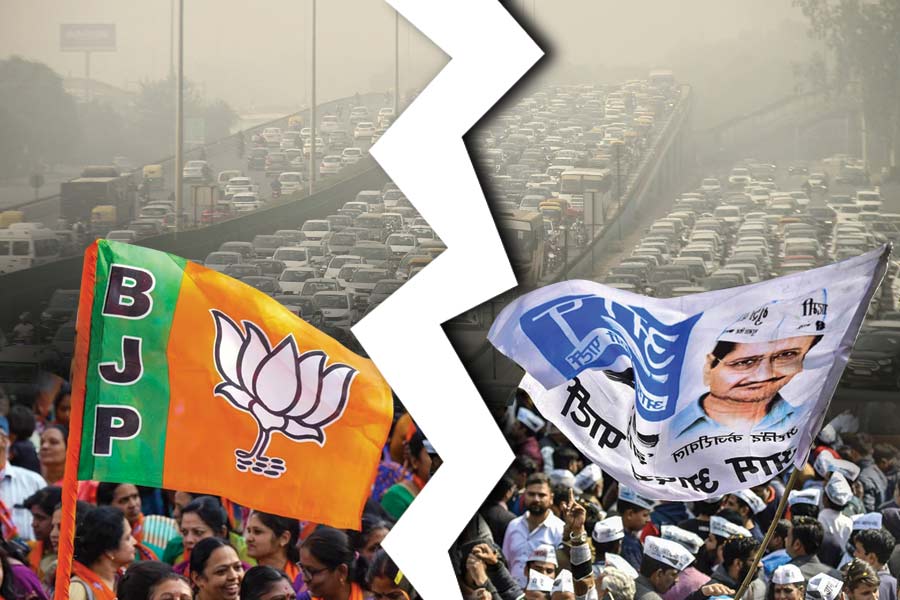Why did China choose the summer of 2020 to make aggressive moves in Ladakh and nearly start a shooting war? Was this a Himalayan Blunder of monumental proportions by the Chinese? Or have they achieved their aim of reminding India who’s boss. Could the Indian Army have nipped the faceoff in the bud if it had been paying more attention at ground level? And how did the confrontation de-escalate? Let’s look at the raft of questions thrown up by the deadly sticks-and-barbed clubs encounter at 14,000ft.
Was it a Himalayan Blunder – by the Chinese?
Face it: we’re still scarred by the 1962 war when it comes to the Chinese. But what do the Chinese think of India? They look with some annoyance and not a little surprise at this country with an economy one-fifth the size of theirs that has the audacity to compare itself with them. In truth, the only real comparison is in population. Despite all this, India’s the lone country in Asia that can conceivably be matched with or against China. Says one China analyst: “The age-old Chinese view of India is: ‘Let’s teach them a lesson’. ”
There’s also one key fact about China: it’s an insecure, aspiring superpower. With 14 land-based neighbours and several others in the South China Sea it could hardly be otherwise. And the last 12 months have been particularly tough for China with the mutually destructive trade war unleashed by US President Donald Trump. In Taiwan, a hostile government took power. And in Hong Kong, protesters created scenes watched worldwide Beijing would have swiftly put down in Mainland China. Then, in April, the Chinese sank a Vietnamese fishing trawler. Says Manoj Kewalramani, Fellow-China Studies, at Takshashila Institution: “In the last year, the Chinese have been feeling threatened from all sides and their instinct’s been to lash out in all directions. None of what they’ve done in the last year makes any strategic sense.” Adds Kewalramani: “They’re insecure about being perceived as weak.”
This lashing out reached the Indian border in September 2019 when Indian and Chinese troops had a distinctly unfriendly encounter on the Pangong Tso banks. The large Chinese contingent followed established procedure and warned off the Indian troops by waving banners and their boats came in menacingly close. But the Indians held their ground. Since then, the mood’s been tenser than usual. But India, oddly, didn’t take careful note.
How could the Indian side have averted the deadly confrontation?
The Indian Army should have been alert to the changed mood on the other side and been prepared for challenges or even a takeover of territory. That's a standard playbook. The Chinese grab an area India claims and we quickly move into a slice of land they claim. This isn’t as difficult as it sounds because it’s a huge border and it’s impossible to guard every inch. For some reason, the Army appears not to have noticed the new mood of aggression and was caught unawares by Chinese moves into regions like the Galwan Valley and into the parts India claims around Pangong Tso.
By the time, the Army realised what had happened, it was too late for such manoeuvres. In fact, a string of unfortunate events slowed the Indian response. The winter lasted longer than usual and the Indian Army was slow to get out on exercises like it usually does in summer months. Both armies keep each other at bay in summer by conducting exercises which also ensure the other side can’t entrench itself in places where it shouldn’t be. In most parts of the world, borders are clearly delineated but that isn’t the case in Ladakh. Both sides have overlapping claims and to keep the peace the two armies are some distance apart and the two sides patrol the No Man’s Land in the middle to which they both lay claim. The agreement is patrols but no permanent structures in these contested stretches. But high-level strategy rarely works like clockwork as it’s supposed to at ground level.
Still, there had been an earlier unreported dialogue between National Security Advisor Ajit Doval and China’s Foreign Minister Wang Yi that had resulted in border dialogues that were progressing well. But then, there was the savage clash in which 20 Indian soldiers were killed along with an unknown number of Chinese. There’s no established explanation for what happened except that it’s unlikely the Chinese really wanted a serious encounter with the first casualties in 47 years. “I don’t think they anticipated what happened in Galwan,” says Kewalramani.
If it wasn’t a Himalayan Blunder by the Chinese, is it part of a grand plan?
There’s a counter-argument to the Himalayan Blunder theory favoured by many analysts. The Chinese first began to take India seriously around 2016 when Internet usage shot up thanks to Jio’s cut-rate prices. This was similar to what happened when the Chinese economy began to take off. Could it be that China is worried about India? Is it possible they see us as a rising power that will gain muscle? Today, the Chinese air force is five times the IAF’s size. Will the gap reduce in the coming years? To ward off potential threats have the Chinese decided that while they are much stronger, they’ll use salami-slicing to grab tactical advantage in as many places along the border as possible? So, they moved to Doklam in 2017. And now, when they saw an opportunity, they grabbed positions in the Galwan Valley, Depsang and Pangong Tso.
What were the triggers for the Himalayan stand-off?
Was it the abolition of Article 370? Did home minister Amit Shah fuel the fire by making statements about reclaiming Aksai Chin? Maybe, but there are no strong indications the Chinese were unduly perturbed by these moves. More to the point, while they’ve rapidly built roads and other infrastructure, they’re extremely touchy when we make improvements on our side. The Chinese have frowned on our road-building. Also, we revived the Daulat Beg Oldi airstrip some years ago, a morale-booster for us even though planes can only land for 15 minutes and must keep their engines running because they’d be unable to restart due to lack of oxygen at that height. Also, India’s consistently snubbed China’s efforts at closer relations by spurning the Belt and Road Initiative and also the RCEP (Regional Comprehensive Economic Partnership).
Is it possible to make peace with China?
There are indications Modi’s tried to play peacemaker in the past. He’s said to have made a plea for direct talks for peace in our times in 2015. Possibly, Modi’s moves were too abrupt and the Chinese were taken aback by the proposal. They replied, yes, they did want to settle but it would be a long-term project. Modi’s said to have backed down but has never quite abandoned this ambitious goal. Could that be why he has been unusually low-key, refusing to even say the Chinese had occupied Indian territory? Or, in another TV broadcast, refusing to name the Chinese even once? In contrast to his bellicose statements on Pakistan, Modi was unusually muted in his response, despite opprobrium heaped upon him which paved the way for new dialogue. In this instance, National Security Adviser Ajit Doval rather than foreign minister Subrahmanyam Jaishankar, who the Chinese are said to find abrasive, starts the ball rolling for mending relations and the Chinese pullback.
Ultimately, though, the main difficulty any peacemaker will have to overcome is that it’s India that wants certainty about the border. But what will we give the Chinese in exchange for a carefully delineated border? That’s tougher to answer. We could offer not to leap into bed with the Americans. But what guarantees are there India won’t move from handholding to more intimate embraces with the US a decade or two from now?
Still, there are advantages even for the Chinese. If there’s peace on the border, says Kewalramani, the Chinese can actually have the Asian Century that they like to talk about. A peace deal with India would have to be followed by some scaling down of India-Pakistan hostilities. That would leave Beijing free to turn its attention to the South China Sea. Try to imagine a zone of peace that linked India, China and Pakistan. As an idea, it’s quite awesome. It would also leave less room for US interference, something the Chinese are extremely keen on.
Is there a worse-case scenario that we must be fearful about?
Analyst Pravin Sawhney has pointed out that Pakistan has moved in additional troops in the Gilgit-Baltistan region. Teaming up with China, Pakistan could attack us and loosen our hold on the Siachen Glacier. Sawhney insists that while India has strife-toughened soldiers, we can’t match Chinese cyber-capabilities that could paralyse both our military and civilian tech systems.
Watch for change of mood.
It’s important to keep alert to any shift in sentiment in China. Notice how the mood’s changed in a short space of time. Modi and Xi Jinping met last October in Mamallapuram full of bonhomie. And Japanese Prime Minister Shinzo Abe and Xi were shaking hands last December in Beijing’s Great Hall of the People. Xi was scheduled to make a return visit this spring but that didn’t happen because of Covid-19. More recently, the Chinese launched a war of words against Japan and called Indian politicians “irresponsible.” It saved the worst for US Secretary of State Mike Pompeo, calling him a “brazen liar”. Says Kewalramani: “From the strategic point of view from end-March, everything they’ve done is very foolhardy. It’s unlike what we expect from them.”
Still, there are hopes for better times ahead, if not outright peace. In a statement after the Doval-Wang Yi talks, the Chinese took care to focus away from the border and on economic angles. “For both China and India, achieving development and revitalisation is the top priority where we share long-term strategic interests. Both sides should adhere to the strategic assessment that instead of posing threats, the two countries provide each other with development opportunities.” Shorn of the diplomatese, does that mean let’s forget about what happened on the border and work together for the future? That’s a message that might bode well for India, China and all Asia.











